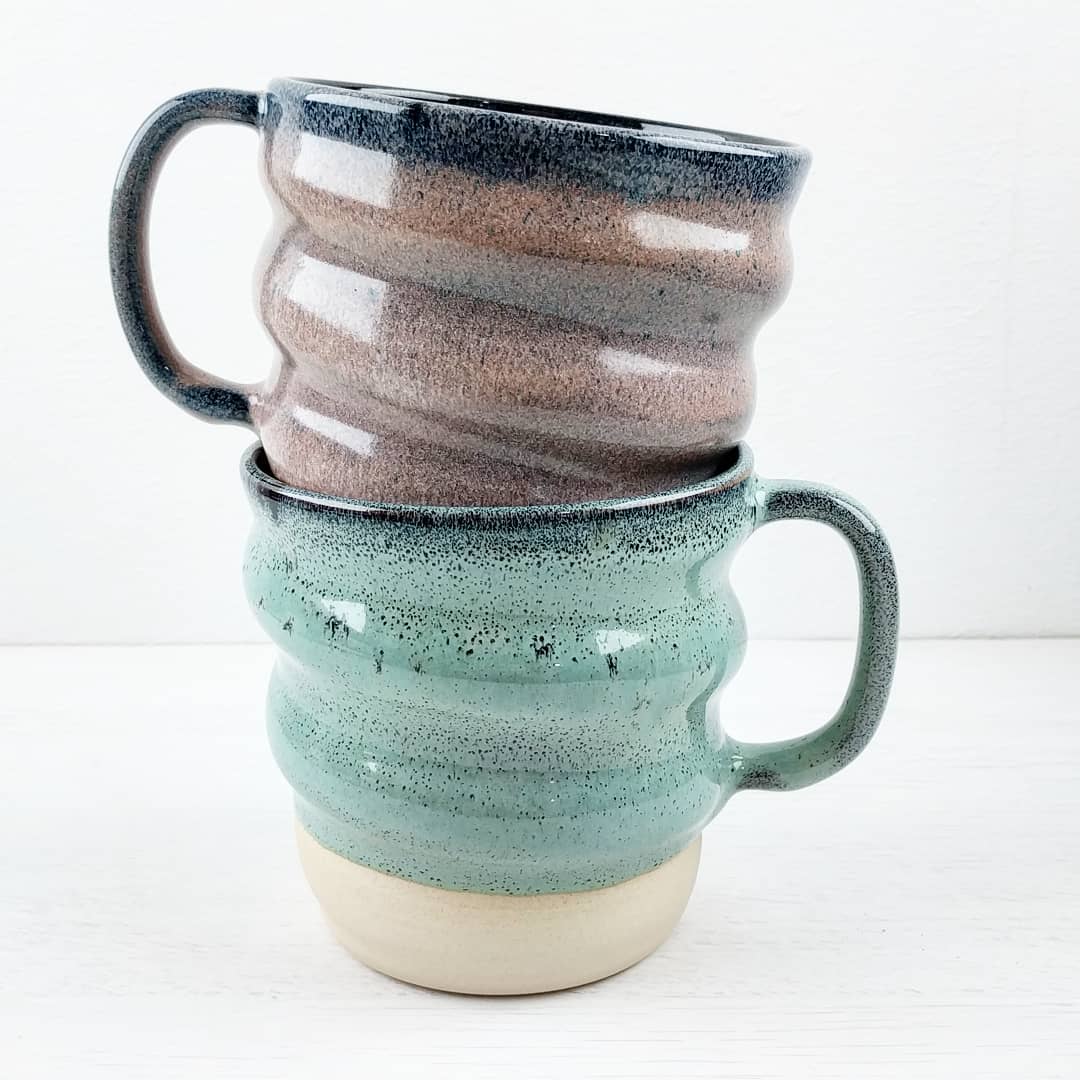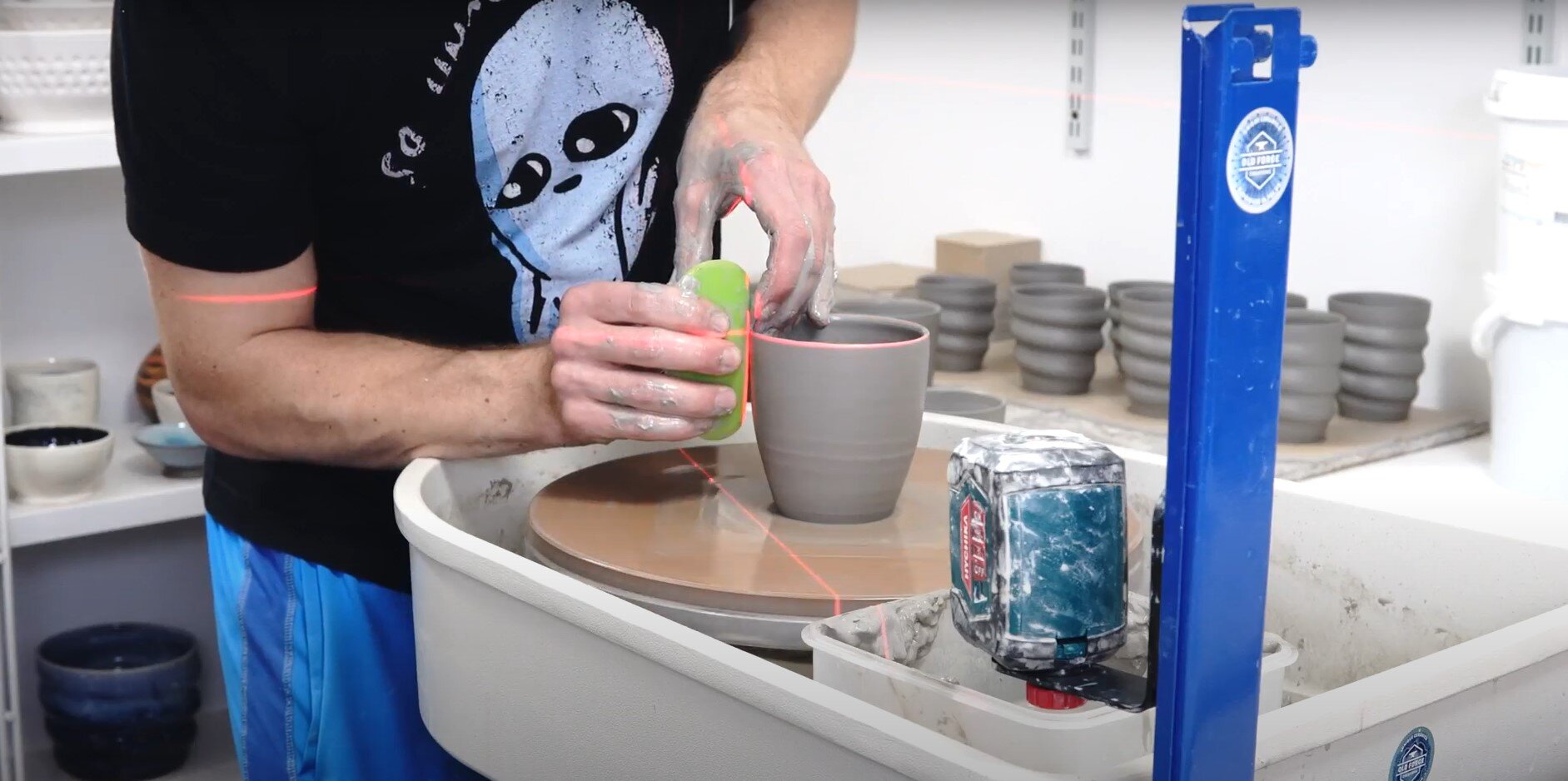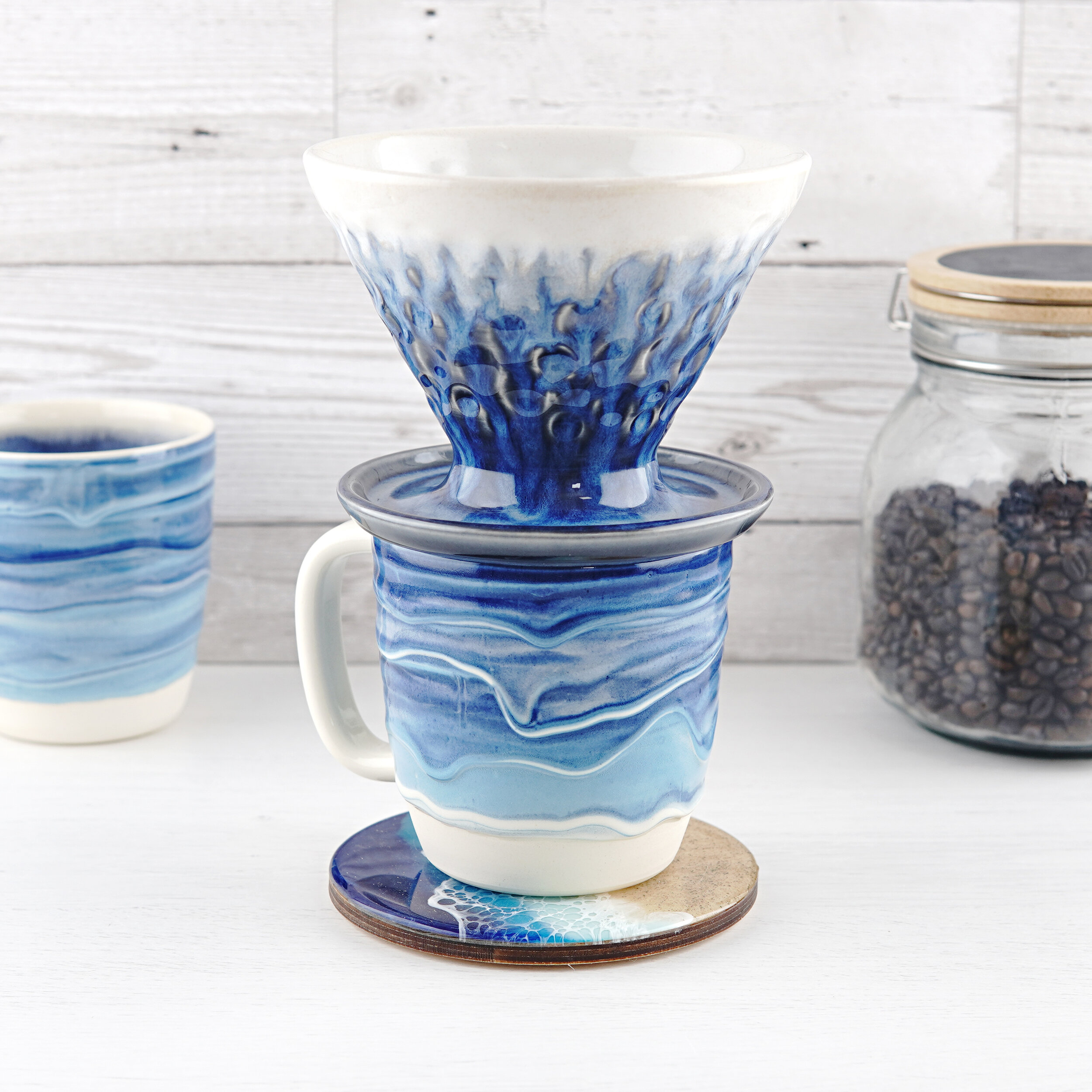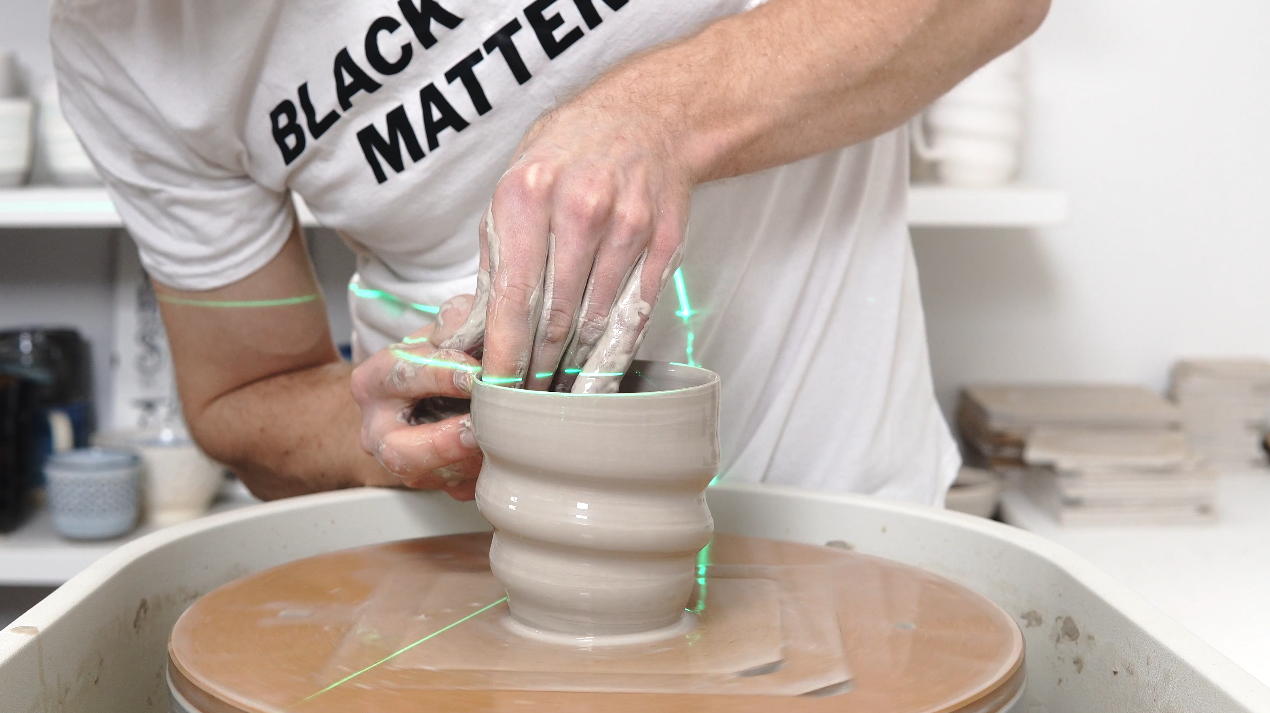Progress vs Personality
This post was inspired by a comment I had recently on one of my videos and the conversation that followed on Instagram. There are two aspects to the original comment I would like to address as I think both are interesting topics.
The Comment
The actual comment is a variation on a very typical trope. It starts along the lines of ‘I’m not criticising, but…’, then goes on to criticise along two main themes; the first is tool use, the second is personality.
The first main point is that you shouldn’t use tools beyond a sponge, rib, and trimming tool, and shouldn’t use any measuring equipment (scales or throwing guides).
The second is that pots made using more tools ‘lack personality. They don't look like they have a relationship with you, but instead, a relationship to your tools.’.
This is coming from a potter with 50+ years experience.
Tools
I believe this comment was sparked by my use of the self levelling laser as a throwing guide, especially in conjunction with the grid insert I designed for Hartley & Noble. These are both visually novel and seem like they have excessive precision for something made by hand, so I can understand why the immediate reaction might be negative. Realistically, they don’t do anything that a conventional throwing guide and a ruler would do, or even a Tombo, they’re just more convenient and comfortable to use.
The comment seemed to be suggesting that it would be better to throw pieces without weighing the clay or using a guide at all, as this would be better practice. I don’t disagree about forgoing the guide for practice, there’s no doubt that forcing yourself to learn something like accurately estimating height visually is going to give you an additional skill over throwing to a guide. The question I have is whether that’s an important consideration. It’s an entirely separate skill to the quality of the work, you could throw a beautifully thin and even piece to the wrong size and you could thrown a clunky and uneven piece to the exact height you wanted. The two skills would usually be related, but they’re not the same at all. It’s more impressive to throw the right size without a guide, but it would also be more impressive to throw while reciting the alphabet backwards. Neither of these make the finished piece any better.
Weighing the clay is a different matter though. I really don’t think you’re adding anything worthwhile to a piece by starting with an unknown amount of clay. There’s no practical reason I can see for not weighing clay, especially if you accept orders on the understanding that they’ll have relatively consistent dimensions/capacities/appearances/etc. I think this comment gets more towards the heart of the issue, which is that the commenter feels that any use of technology detracts from the ‘personality’ of a piece of work.
Personality
This is an argument that I’ve seen be made countless times, normally directed towards people near the cutting edge of the intersection between ceramics and technology. People like Curt Hammerly, Kenny Sing, or anyone using a 3D Clay Printer. The idea is typically that something intangible is lost for each additional technological process added, and it’s very hard to argue against something subjective like that.
My personal take on it is that there are two aspects to an object, the thing itself and the story of its creation, and they should be treated separately (sidenote, there’s an interesting and related cognitive bias called the IKEA effect, which is quite a good demonstration of the difference).
When you hold an object without context, you judge it on its intrinsic attributes. There are a huge range of aesthetic and practical things you might consider, and a lot will depend on your personal preference.
Imagine you picked up this mug without knowing anything about it. Then imagine you were told that it was thrown on a kickwheel and faceted by a master potter in a remote mountaintop studio with no running water or electricity. Or told that it was one of millions being slipcast in a factory by someone barely paid enough to eat. Obviously these two situations would change your valuation of the backstory, but the mug is exactly the same.
This is the issue I have with any argument about the ‘personality’ of a piece. It’s generally presented as something intrinsic to the piece itself, but in reality it’s a value judgement of your understanding of the backstory. A piece can gain or lose ‘personality’ as you learn more about it.
The real backstory of the mug above and how it came to exist is one of a single ceramic artist refining numerous techniques over many years to integrate commercial mass production processes into small batches of unique work. You can see that as a positive or a negative. I think it’s a beautiful mug, the process and development of it is fascinating, and if that doesn’t have personality then I’m not sure what does.
Whether that means a piece has a relationship to the tools rather than the maker seems a bit of a moot point. It’s the maker that chooses, uses, and often creates the tools, and that will be as unique to each maker as the choice to not use them. Curt’s work is very distinctive and easily recognisable. It seems churlish to argue that it’s unique to his tools rather than to him, given how the tools came to exist in the first place.
Also, I think it’s a real shame to want the next generation to make the same work you have made for 50 years, or even start at the same point. There are some aspects of the ceramic process that are naturally timeless and some that evolve, and wishing for no progress between generations in the subjective and aesthetic parts of the process seems like a very boring desire.
I think the most telling part of the argument against technology is the cutoff point for what is acceptable and what isn’t. In my experience, it’s rare for anyone to draw this line anywhere other than what was normal when they were young. Anything from before turning 30 is fine, anything afterwards is sucking the soul from an ancient and traditional artform.
Incremental improvements have been made by each generation for thousands of years. It’s a longstanding tradition for every generation to feel that the one following it has gone too far, but the same would have been said for the introduction of technologies they find normal. I fully expect that I’ll do exactly the same in 50 years. I’m already a grumpy old man in a young(ish) man’s body, so there’s no hope for me. But I hope I have the self awareness to know I’m no more or less correct in 50 years as the person who left that comment is now.
Unsolicited Advice
Getting unsolicited advice is absolutely nothing new, it’s something most of us deal with on a regular basis offline as well as online, so I’m sure most people can relate to how unwelcome it generally is and the importance of the way it’s worded.
There’s a big disconnect between the impact of giving and receiving unsolicited advice, and I believe it’s something more people need to think about before giving it. The compulsion to try and help someone by giving them advice when you feel you have something valuable to add, and the throwaway nature of comments like it, make it very common for total strangers to weigh in on situations they have no context for. It’s one of the most frustrating things about being a new parent, as it’s a perfect storm of a hugely complex and unique situation (babies are intense and stressful, and what worked for one baby might well not for another even within a household) and a huge number of well meaning advice givers.
The problem is that there are a very finite number of things you have time or capacity to try, and when you’re figuring out the best way to manage a stressful situation, It doesn’t help having someone come and tell you you’re doing it wrong and offer advice that directly contradicts the previous person who did the same.
Obviously I’m not saying nobody should give advice, only that we should all give more thought to the impact of how and when we do give it. That could be the phrasing (telling someone what worked for you, rather than telling them why they’re doing it wrong), it could be the timing (if someone is tired, hungry, stressed, angry, etc, you can guarantee that even well worded advice won’t be received as well). The same is true over the internet, but it’s also much harder to judge someone else’s current situation.
I wrote a bit more about it on the Instagram post, but I was tired when I read the comment and the tone combined with the (questionable, in my opinion) criticism had a bigger impact on my day than it warranted, which I’m certain it wasn’t the intention. It took me longer than it should to see past the way it was worded and the (what I consider to be) flawed arguments to get at what the commenter was trying to say. This is partly on me, receiving feedback without automatically becoming defensive is a valuable skill that I obviously had an insufficient amount of on that day, and I feel it’s partly on the person who wrote the comment. I don’t believe they stopped and thought about what they were saying and how they were saying it, and I don’t think they would have worded it the way they did if they had.
If you’re giving advice in a genuine attempt to help someone, delivering it in a way they can accept is as essential as the quality of the advice. If you don’t care whether they receive it in a way that will improve or ruin their day then it would be worth looking introspectively at that urge and why you want to give advice in the first place.
The world needs more kindness.










